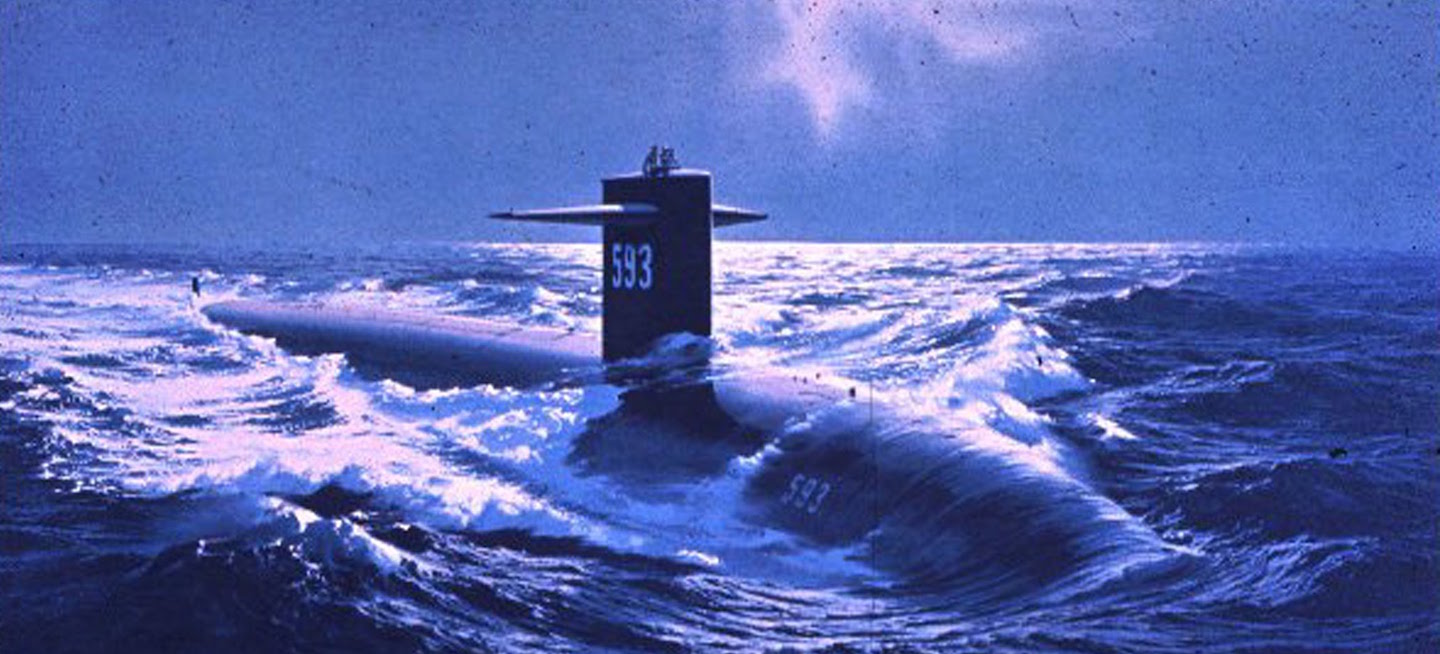What can Losing the USS Thresher Teach Us About Enterprise Content Management?
April 10, 1963: In Boston, Massachusetts it was a cool spring day. The temperature reached just about 5C–scarcely enough to recast periodic flurries into what some call a Scottish mist. 320km to the east, no one was much concerned with the weather. The US was still smarting after its failed attempt to overthrow Castro at the Bay of Pigs, and the world trembled with a frisson of unwelcome anxiety following the Cuban Missile Crisis. Aboard the USS Thresher (one of the US Navy’s first nuclear-powered attack submarines) the mood was serious.

Returning to sea after refurbishment during early spring, Thresher was accompanied by the USS Skylark, there to support deep-sea diving tests aimed at certifying Thresher’s overhaul. Fleeing the steady march of dawn, Lieutenant Commander John Wesley Harvey guided Thresher on her slow descent into the cold, dark waters of the Atlantic. Pausing periodically to conduct safety checks, Thresher corkscrewed herself languidly into the sea until she reached her test depth, some 300m below surface of the icy Atlantic. And then, things began to go very, very badly. During the next 20 minutes, a cascading series of catastrophic events occurred, culminating in the complete loss of the submarine, and the tragic death of all 129 aboard.
At this point, you might be thinking, “Cool story, bro. But what does it have to do with Enterprise Content Management?” Well, the loss of Thresher kicked off a court of inquiry, which recommended that the Navy implement a more rigorous program of design review and safety inspections during the construction of future submarines. The program, which launched approximately 8 months later, was called SUBSAFE. During the inquiry that lead to the initiation of the SUBSAFE program, it was discovered that record-keeping at the Portsmouth Naval Shipyard had serious shortcomings. For example, the inquiry discovered that no one could determine the whereabouts of hull-weld X-rays made of Thresher’s sister ship Tinosa, or even if the welds had been made at all.
And yet, in 2013, 50 years after the sinking of the USS Thresher, the accurate management of enterprise content remains a challenge. When we talk about ECM, we often speak about benefits such as:
- Enhanced governance supports process harmonization and business agility
- Improved tools to enforce and evolve policies reduces legal and regulatory risks
- Enhanced search capabilities reduce the 9 hours each employee invests every week searching for (often unsuccessfully) and then recreating existing information
- Consolidating repositories improves response compliance to regulatory requests
- Enterprise services encourage IT innovation and help IT become a true business partner
Less often, we talk about the actual tragedies (environmental, health, and safety) that rigorous ECM policies can help avoid–or, at very least, reduce. Half a century later, this shouldn’t still be a problem, but it is. Good ECM is hard: it requires a commitment from everyone in an organization, and—especially in large firms—requires dedicated effort to clean up a historical legacy. The good news is that modern tools can help take some of the drudgery out of content management, and permit users to focus on things of higher value: simplifying enterprise information management policies and programs, coaching staff how to best use the tools to solve their business problems, and extending the functionality of the tools to enable new capabilities.
Firms who are just getting started will never address all their issues in a day, but this isn’t an intractable problem, and there are structured ways to think about it, work through the hard parts, and make real progress over time. If you would like to talk about it in more detail, please get in touch.
A thousand “thank yous” to the many Wikipedians who helped document Thresher’s tragic, but fascinating story.